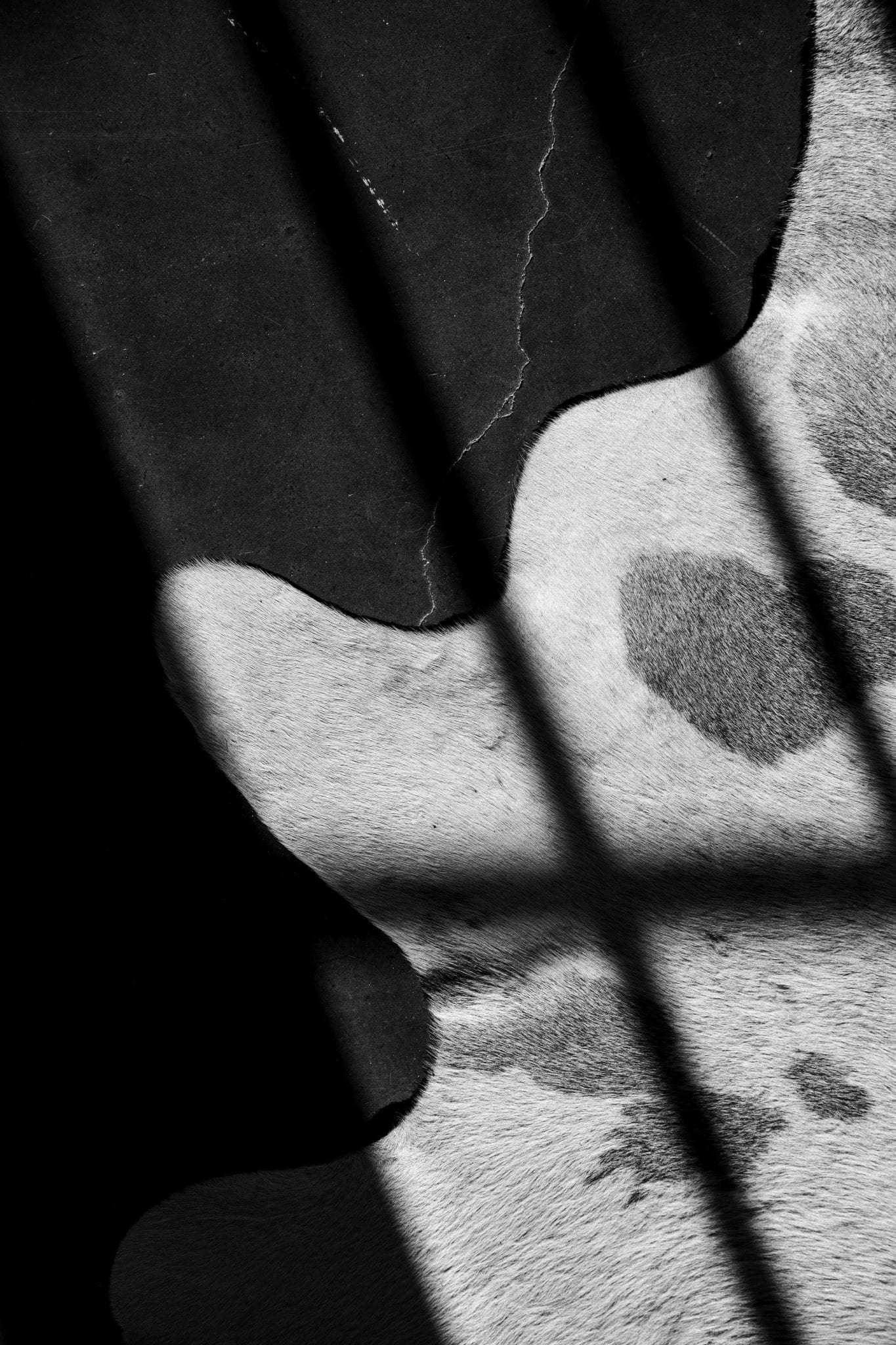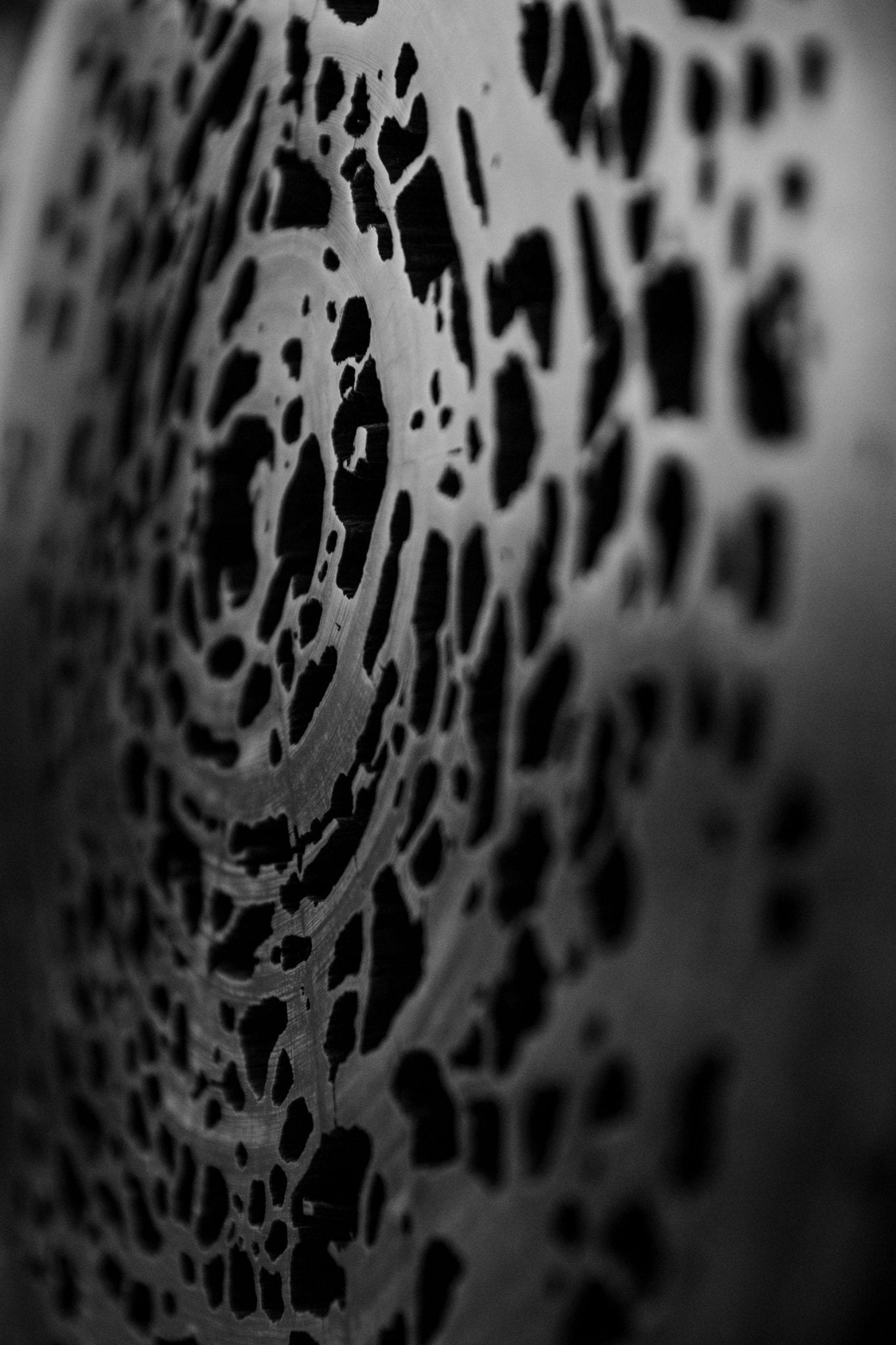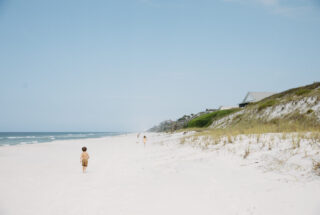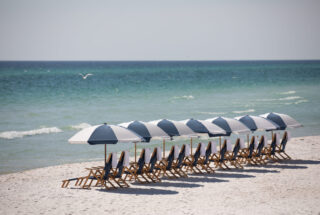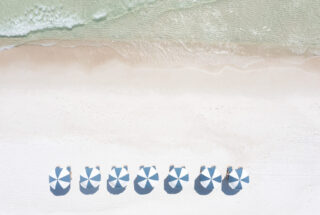

Marieanne Khoury-Vogt and Erik Vogt have been the town architects at Alys Beach for over fifteen years. They were stewards of the creators’ original vision, shepherds of its growth and development, and serve now as forebearers of a community that flourishes in no small part because they helped to set and stay its course. The fact that they stayed so long is a surprise to them, given both the nature of the position (typically held for two to four years in one place) and also their more cosmopolitan leanings. But Alys Beach became their home, their place to raise their children, their resting place after travel, and their playground for putting into practice concepts of New Urbanism they both studied and believe in. Their careers and personal lives became so intertwined with Alys—their former clients became their neighbors and friends; public spaces they designed became where their daughters played—that they remained there, its first and longest full-time residents. In conversation, as in their work and as in their lives, they are true partners. There is a seamless flow to their back and forth, a respectful and lively connection that has no doubt given them each the space to be and to grow. As they say, their personalities are different but complementary, their strengths in their work different but complementary. They have, with seemingly no effort, found and built a life together that is admirable in its cohesiveness and adherence to the values and principles that they foreground. It is easy to imagine that most people walk away from time with the two of them wondering how what they have done is possible while having undeniable proof that it is indeed possible.
Cassie: From what I’ve read, the two of you are together in all things, so take the questions, and answer as you wish. What are some of your fondest memories of your upbringing and childhood? Marieanne: You know I’m a complete immigrant. I say “we” were born in England a lot because I’m an identical twin. We lived there for the first three years and then we moved to Lebanon, which is the first home and terrace that I can remember. Outdoor living was a big thing for my parents. We left when the civil war broke out, thinking we were going to leave for two or three months, and in fact, we never ended up going back. Our apartment was destroyed. We went to France, which we thought would be short-term, but it ended up being a two-year period. We survived through the graces of our church and our neighbors who donated blankets and sheets and pots and pans and plates—stuff to make a home. To this day—even though we subsequently left France and went to live in Abu Dhabi for two years and then in Jordan briefly and then in Saudi Arabia for my dad’s job—Paris is always going to be the place that I consider home; it’s where my heart is. When we got through that first difficult cycle, we then were exposed to a lot of travel with my parents. They entertained a lot. They went out a lot. And it was very important to them to expose my sisters and me to different cultures, different religions, different countries, and it was something that we did as often as we could.
Erik: That covers it for me. (Laughs) No, we often joke between ourselves that we’re very much the opposite in terms of upbringing. I was raised in a small New England town, very idyllic, Connecticut, and very much the model of a traditional small town. I don’t have any specific memories, though just that milieu was very formative, I think, in terms of the streets, the houses—many of which were Colonial, including the one I grew up in. It has a town green—again something that was very archetypal, emblematic, with congregational churches around it. There was the town center, oak-lined streets, clapboard-style houses, small grocery stores. Indeed, I grew up across the street from a neighborhood grocery store. It was quite quaint.
C: It’s interesting, Erik, because the second part of my question is: What did design look like to you in your youth? Your enduring memories seem wrapped up in design and the way things looked and were arranged. What about you, Marieanne?
M: Because we traveled a lot, we were always being exposed to great public buildings. We always visited the churches, the temples, the palaces, the museums. But it was also very much about walking through the neighborhoods and seeing what a typical house looks like, a typical street. My parents were interested in exposing us to both. I remember that when we were 16, we had to write about something that inspired us. I wrote about travel and, at the time, I had been to 16 countries. I remember thinking that I wanted to have traveled to as many countries as my age. I’m 51 now, and I’ve been to 62. I want to keep building on that because it gives you an exposure that is otherwise hard to acquire. It’s extraordinarily enriching.
I think in our work we certainly seek to provide those spaces in abundance, spaces that are really gracious and generous in their living, conducive to entertaining, and then also places where you can retreat and find peace and solitude if you seek it.
C: How would you say travel influences your work today? M: I think one of the things is seeing what people from all over have in common. And it’s the idea of entertainment and socializing, creating soulful places where you can gather as a family and also where you can entertain. I think in our work we certainly seek to provide those spaces in abundance, spaces that are really gracious and generous in their living, conducive to entertaining, and then also places where you can retreat and find peace and solitude if you seek it. E: I’ll speak to something very specific, which is that Alys Beach was originally conceived in terms of the house types as courtyard homes, which is something that is rather foreign to North America. It’s not a house type that you find here. But it’s very common in many other cultures, many diverse cultures. We’ve become very much involved in that type and understanding it and working with it, and we’ve found in our travels you most often encounter that type as opposed to any others—be it Southeast Asia; Middle East, of course; Japan; South America. Seeing all those different iterations with different building materials, different configurations, different cultural and social and familial arrangements has been very interesting for us. Every time we come back, it inflects our work even more
C: The most inspiring place you’ve traveled? E: They all are, of course.
C: Another way of putting it may be, what is a place that stays with you?
E: For me, it’s definitely the Middle East. Morocco and Egypt resonated the most. That’s something closer to Marieanne in terms of her heritage, but I’ve always been attracted to that sort of exotic milieu. And on the polar-opposite end, one that’s much closer to my heritage, but that I’ve found very formative architecturally, is the Scandinavian countries—Sweden, Denmark, and Finland. M: Erik stole a little bit of my thunder. Morocco and Egypt are way up there for many reasons. I think there’s an emotional attachment. And certainly Paris for me in all sorts of ways. Just walking in the streets of Paris and looking at all of the idiosyncrasies at the pedestrian scale was always important, and so I think we try to pay attention to that in our own work.
C: Did the two of you meet through your shared profession of architecture and design? M: We did. We like to joke that we met in high school, which of course, is funny because Erik was in high school in Connecticut and I in Paris and we were 27 when we met. We met “in high school” because we were both working in An interview with Erik Vogt and Marieanne Khoury-Vogt 17 Miami, and as a means of supplementing our income, we were both doing some adjunct teaching at a design and architecture high school.
C: How are you different and in what ways do you think similarly, in terms of design? E: We are generally quite sympathetic in terms of design. I can sometimes be a little more dogmatic with regard to it, and Marieanne is much more tuned to the clients than I am at times. So I think my strength is that if it’s a strong idea, I will defend it in its purity, and what Marieanne brings to the table is a certain suppleness in accommodating what clients and owners may want and need against the imperatives of design. In terms of sensibilities, we’re very much on the same page, and we recognize the strengths of the other and are respectful of it when they sometimes clash. It usually yields a much better result. M: I like the way he said that.
To me, it means a community where you can live and work and socialize all in one place, in walking distance, where your needs are met through a variety of different forms and buildings and where neighbors and owners have a shared pride in the civic places.
C: What does New Urbanism mean to you? M: To me, it means a community where you can live and work and socialize all in one place, in walking distance, where your needs are met through a variety of different forms and buildings and where neighbors and owners have a shared pride in the civic places. E: In a basic sense, it’s just urbanism, the traditional urbanism that essentially every country grew up with for centuries, and adapted and modernized over time, and the New Urbanism is simply a reaction to the aberration of post-war in the US but certainly exported to other countries, unfortunately. So, it’s a movement just to reestablish urbanism as most everyone on the planet knows it, as the primary building method for communities, large or small.
C: How do you create a building that not only stands alone beautifully but also exists as part of and in relation to a whole community? E: To be purely pragmatic to begin with, Alys Beach, like other New Urbanist towns and developments, is governed by a form-based code that dictates quite a bit of how the houses are built, the arrangement of windows and massing and volumes and materials and colors. This is a foundation that you’re literally and figuratively building upon, which brings you a long way toward establishing a commonality of architecture and, at least visually, sets up a certain compatibility. But then beyond that, what you want to do is simply see your little piece of the home you’re designing for someone as a small component that can be added to the greater whole in what you hope will be a beneficial way, that will add to it rather than subtract from it. That can also mean not overwhelming that particular milieu or neighborhood or street, meaning you’re not looking to show off. You want to add just enough that it adds to the character but not so much that it’s in any way stepping on anyone else’s toes or distracting from the greater whole.
C: Can you speak a bit specifically on why it is important to incorporate outdoor context into a home? M: We’re going to talk about here mostly because so much of our work over the past fifteen years has been in Alys—but it’s first and foremost the climate, which is wonderful ten or eleven months of the year, and even when it’s a little bit chilly it’s still great to be sitting in outdoor spaces. I’m so used to growing up in spaces where you socialize by talking and engaging with each other, so the idea of being able to retreat to a place where you have the sound of water and the wind—as opposed to televisions—is very appealing and enduring. It’s different than being in a more closed environment. E: It seems natural and intuitive that one would want to incorporate outdoor living in a place such as Florida, even northern Florida. It seems like almost a must. So, the courtyard type was specifically chosen by Duany Plater-Zyberk as the basis for Alys Beach in order to inculcate and sponsor outdoor living. The courtyard can easily be conceived of as an outdoor living room. They’re connected to and sympathetic to and complementary to the indoor living room. We can’t imagine, frankly, ever designing a house without some form of courtyard, or at least a terrace that is semi-enclosed. You’ve got the building walls to do it, why would you not take advantage of that in every instance? Even when the climate may not be conducive to such, it still creates amazing spaces to at least look into if not occupy much of the time.
C: Something you said, Marieanne, when you were talking about arriving in Paris and people bringing your family things—the stuff to make a home—stuck with me. What does it mean to design a home—not just a house, but a home? M: The best clients always are the ones who are engaged in the process with you, who look forward to that process of discovery when you are designing, and who fully embrace it and bring their thoughts and their ideas as to what they want their home to be like. They are the ones who are then trusting us with those ideas to present to them something that will be very seductive and romantic and a place where they will want to linger and grow old and have their kids grow up and all of that. It’s a fusing of a lot of those elements that go into designing a home. It starts with just probing questions that are no different than any architect asks—what are you looking for, what is your program—and we will listen and take notes, and we see it as our job to then hopefully deliver something that is a little bit unexpected to them, that they wouldn’t have necessarily thought of, but that they will find really appealing.
C: So, in part, it’s at least a relationship with or an understanding of who you are designing for and what matters to them. M: Yes, and it’s not something that’s going to be frozen in time forever. It’s important to think of spaces that can change and can evolve, whether it’s a growing family or friends coming and going. That’s equally as important.
C: Is it important that your work is interpreted the way you intended it to be, or does that not matter? E: No, that’s not important to me. Everyone brings their own perceptions to these things, and I respect that, just as we bring our own to other work. And also we haven’t found—the times that we have talked to people about the work—that there is a great disconnect. What you mostly see is that people will foreground what intrigues them the most. It may not be what is most important to you or even what you intended; nonetheless, you usually see the connection back to the work. You can gain insight into your own work that way. M: I agree with what Erik said. To me, it’s like walking into a museum and looking at works of art. I think it’s greatly enhanced when you can probe the mind of whoever it is that created it. When I was younger, it used to drive me crazy to walk into a museum and look at a painting that I loved for whatever reason and then see that the artist had said it was Untitled. I always wanted to understand a little bit more so, I really love it when people ask us specifically about our work or what were we thinking. I think if you have an opportunity to explain that it’s nice.
C: Often the exploration of other creative outlets helps to grow and focus our creative gifts. How do you continue to grow yourself creatively? E: What we spoke about with travel is probably the greatest influence. Secondarily, I am horribly mono-faceted. My interest is in design. I have a few outside interests, but I don’t play music, I don’t paint, I’m not an artist. I very much just enjoy looking at others’ works through books, magazines, through journals, and obviously through social media. I tend to be pretty insular in terms of design. I do like to look at product design and graphic design and see how they also can begin to influence architectural design and the like.
C: What about you, Marieanne, any creative outlets? M: Certainly travel and looking through books and magazines. I also do like to read. I belong to book clubs, and I like to socialize. I don’t do it as often or as much as I would like, but I love the general exchange of ideas and I get a lot out of that. I like moments of solitude, but I mostly enjoy being with friends or colleagues, peers. I find myself craving that quite a bit. I also listen to podcasts and I listen to music in all genres, from whatever my daughters may be playing very very loudly—pop and whatever—to music that’s quieter and may be a little bit more inspiring when one is being creative.
C: How do you begin your day? Even through travels and work, do you have any type of daily ritual? M: For me, it’s coffee in the morning. We’ve been married 22 years and he brings me coffee every single morning. I start with looking at the news—I have to stay informed of what’s going on. Not only in the US but also in the four corners of the world where I have attachments and family. I look through Instagram and magazines. It’s a concentrated short burst, but it’s how I start my day. E: As you can glean, I get up earlier, and I am immediately sitting down at the desk to draw. I love working in the morning so I have a couple hours before school starts and the office opens where I can work quietly and catch up on things or solve particularly intractable design problems that require solitude and no distractions.
C: What does a day of leisure look like for you? Where do you go, when you’re not working? E:What is that? M: Yes, we work a lot. We have an amazing team in our office who we rely on a lot, who are a huge part of the success that KVA has enjoyed. But a day of leisure could be going to the beach with or without our daughters. I have found that as the girls have gotten older, the time that they spend with you, though it may be more infrequent than you would like, can be a little bit more intense, where the conversations are a little more meaningful, so that’s always great. I read. I love movies, love spending time with friends, and love planning for wherever our next travel is going to be. We take that seriously. A day of leisure here, I wish I could say, was going to museums or taking in a show or going to see an exhibit, and we don’t have a lot of that here but it’s what we do when we travel. Then it’s nice to come back and decompress here. E: I don’t have days of leisure. I haven’t had one in a long time, by choice. I almost always am working for some portion of the day. But what I do, rather ritualistically, is in the evening or late afternoon, I will go out on the loggia and smoke a cigar and have a glass of bourbon or wine and usually read. I find that’s enough to recharge me on a daily basis without having to take whole days off. So my weekends are indistinguishable from my weekdays in that respect. I take my days of leisure off in little two-hour blocks. M: Our little loggia, which is probably 250 square feet, if that, has become a place where Erik and I will retreat every single night to. I will always join him at some point, and we find ourselves there talking about the day, talking about design. People ask us all the time if we ever get tired of that and we never ever do, which is wonderful. So it just becomes a place for us to spend some moments alone. Sometimes our daughter—we have one in college now, but the one who lives at home—will come and she’ll join us for a small spread of time then. Then we have our little dog, Cleo, who will crawl on one of our laps. It’s just a great way to end the day. Right now, I’ll join him with my sake, which I’ve become obsessed with since Japan. E: And I enjoy the space as being alone as well as a sort of social place with Marieanne or with friends, equally. I love it when someone joins me as well. It’s not necessarily alone time per se. Though sometimes when it gets colder it’s only me out there.
C: It’s wonderful that your design principles match up with how you live your lives. Since you live and work together, how do you balance the personal and professional? It seems like balance may not be right word. M: The personal and professional have almost become indistinguishable to me now. But it’s not a bad thing. I can see how somebody would look at that and say, “Well, that's odd,” but it’s what we know and just what we do, and we have found a way to make it work relatively effortlessly, which is I think quite amazing. Because we get a lot of pleasure out of the work that we do, it’s not a problem. We enjoy talking about work, we enjoy discussing work, and it has been so fused with our daily life. E: It’s indistinguishable in many ways. Part of that is our circumstances. We’re living in a place we were employed by and also building out. That makes it hard to separate. Also, we’re very good friends with many of our past clients, current clients. As I said earlier, they’ll travel back to their home cities or towns and then come and visit a few times a year here, so that’s another way in which our work and social lives and families are sort of bound up in each other. M: I thought when we were going to be living here that it was going to be very quiet, and that’s very far from the reality. I think certainly some of it is self-imposed, but the other part is the reality of what Erik is describing. I wouldn’t have it any other way. I love that.
C: Was this seamless ability to work together always there, or did it develop more over time? M: The very first project we ever worked on was a competition when Erik was doing his graduate studies at Yale and I was working and we’d been married a year, and we won the competition. But it was the first time that I realized that I would actually really enjoy working with Erik. We knew we wanted to start up our own practice and so it felt safe. It felt like something that we could embrace and do well together. I became aware of that realization quite early in our relationship. The first six months, when we started dating, were just the wonderful time that any couple has, and then the next six months were more challenging, where all of our differences came out, and then it became a matter of how do we reconcile those differences and are we committed to that? Once we answered that question the rest was relatively easy. I don’t know that we knew we were going to work together, but we came to the realization quickly. E: I never thought about it overtly. But we’ve been very lucky in that we have complementary personalities and skills, strengths and weaknesses as we spoke about earlier. Those mesh together fairly well and help us navigate all the different aspects of professional life. It generally has been very much smooth sailing.
We’ve had a remarkable breadth of experience here in terms of all the types of buildings that a town will have, the opportunities that will present themselves.
C: In wrapping up, your names are almost synonymous with Alys Beach architecture. What are you most proud of from your years here and your work? M: That’s a great question. The success of Alys Beach first starts with DPZ and the vision that they created and the design code that they established, but I think what’s been, what I’m really proud of is the strong design hand, the influence we’ve had, in evolving a little bit the style and creating a streetscape and an urbanism that I hope is going to be memorable for generations. E: I think I’m most grateful for—and something that was unexpected by either of us when we first started—was how long we’ve been able to stay involved. We really thought that we’d be here two to four years and relinquish the role to someone else who would then stay two to four years and so on and so on, which has been the tradition of Seaside and Rosemary Beach and other towns that have architects. But, instead, we were able to stay on, obviously, far longer than that and have, therefore, had the opportunity to shepherd it not only through its birth but through its childhood, and I guess we’re probably in the adolescence now, maybe approaching adulthood. And along the way, because there’s been such a long stretch of time, we’ve been able to design not only homes but basically every type of space and building that one would have in such a town. So we’ve been able to be very much involved in the creation of public spaces, civic buildings, mixed use and retail buildings and have been able to design homes that are in the scrub and homes that are Gulf-front and everywhere in between, large ones, small ones. So we’ve had a remarkable breadth of experience here in terms of all the types of buildings that a town will have, the opportunities that will present themselves.
C: Alys really is remarkable. Just driving through, you feel that you’re in something entirely unto itself. M: It’s something we hear a lot. People say, “I feel like I’ve never seen anything quite like it.” The idea of someone being able to feel transported is really strong and really compelling, and we love that. We love, love, love that.
C: Thank you for your beautiful work and for your time. It’s been a pleasure.





